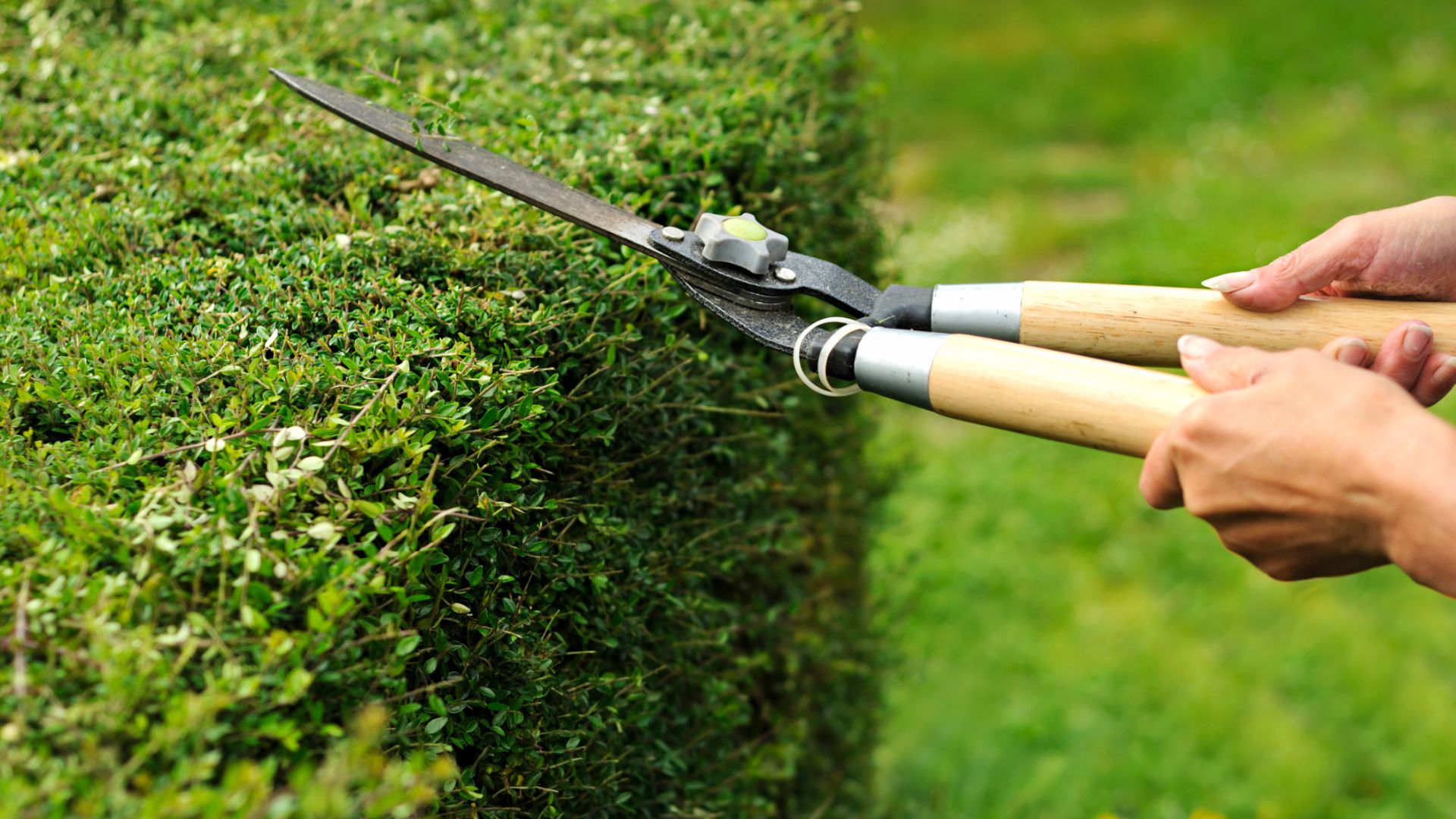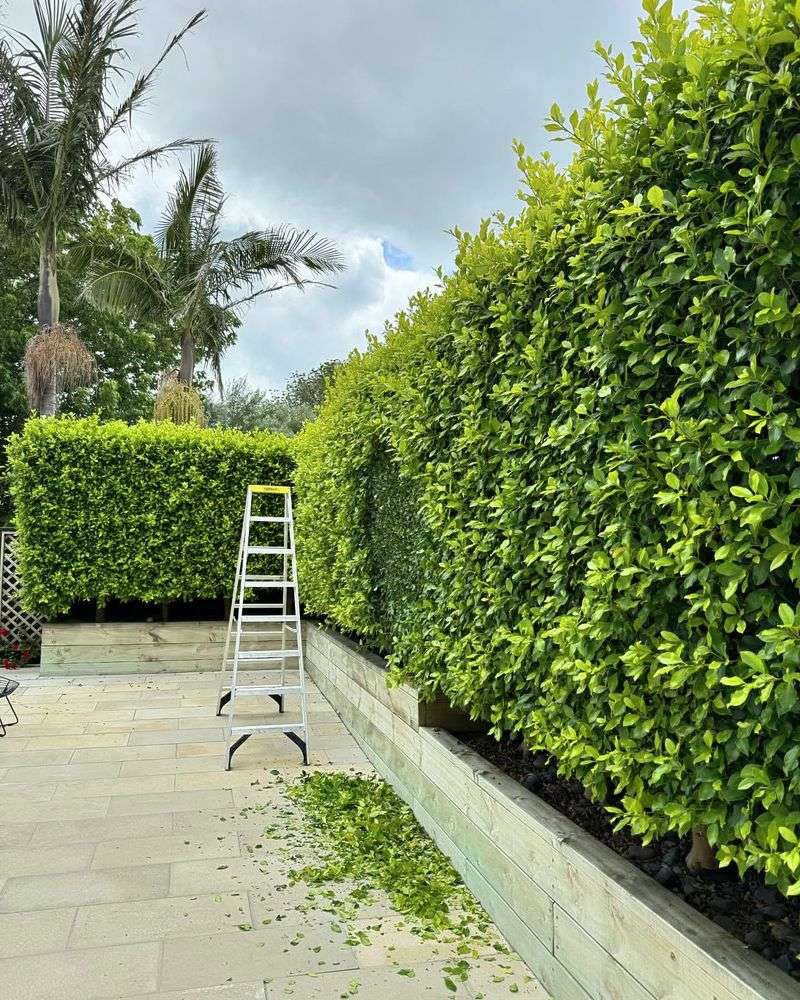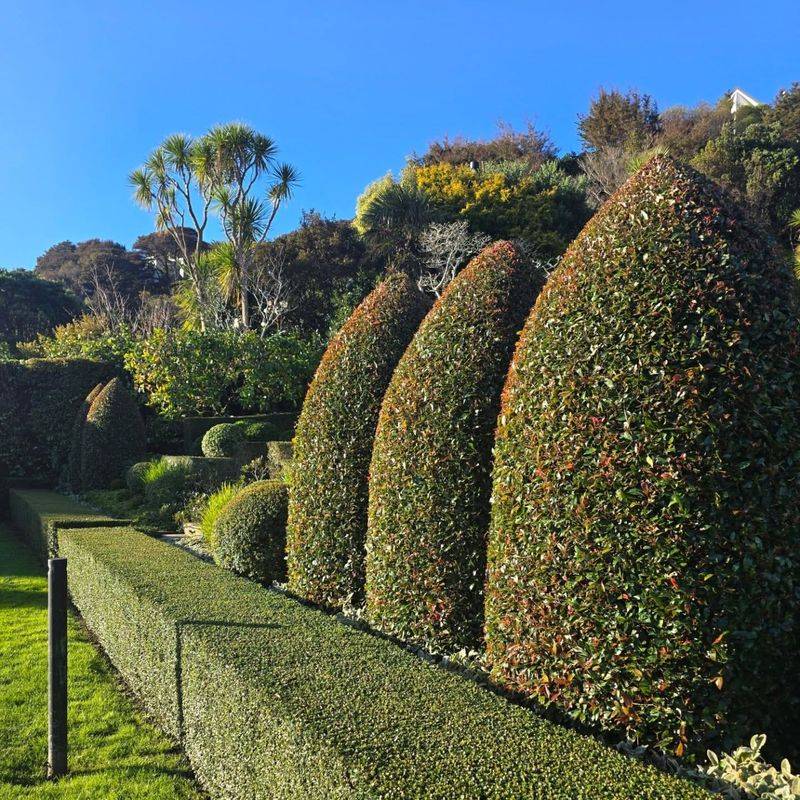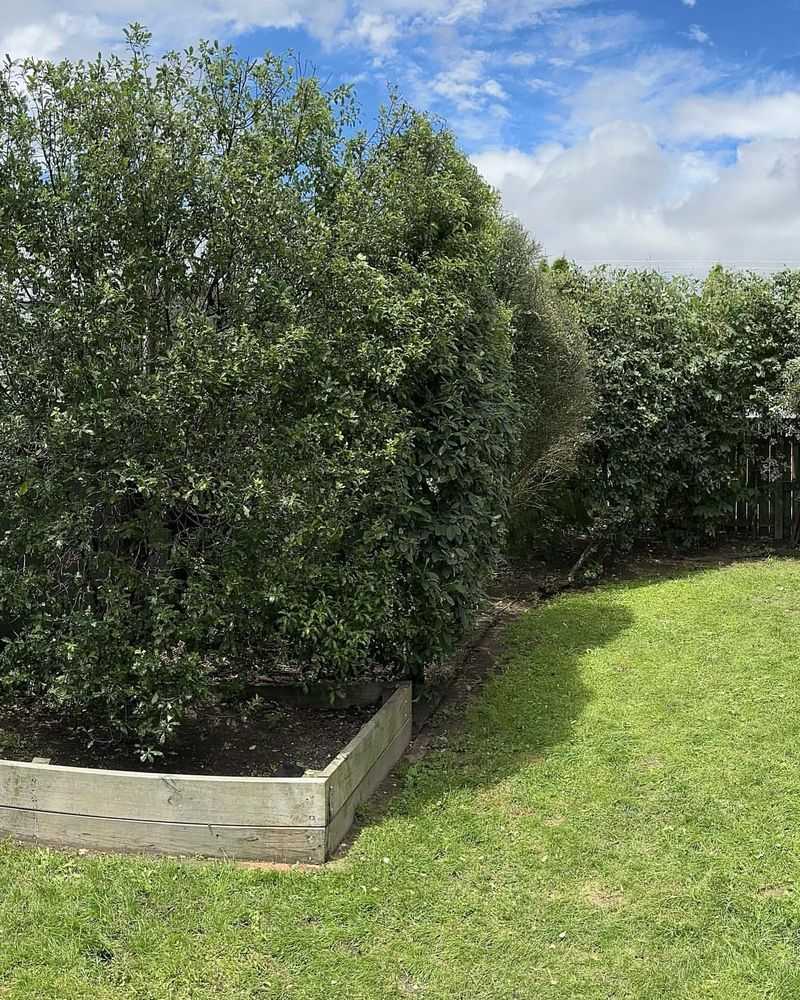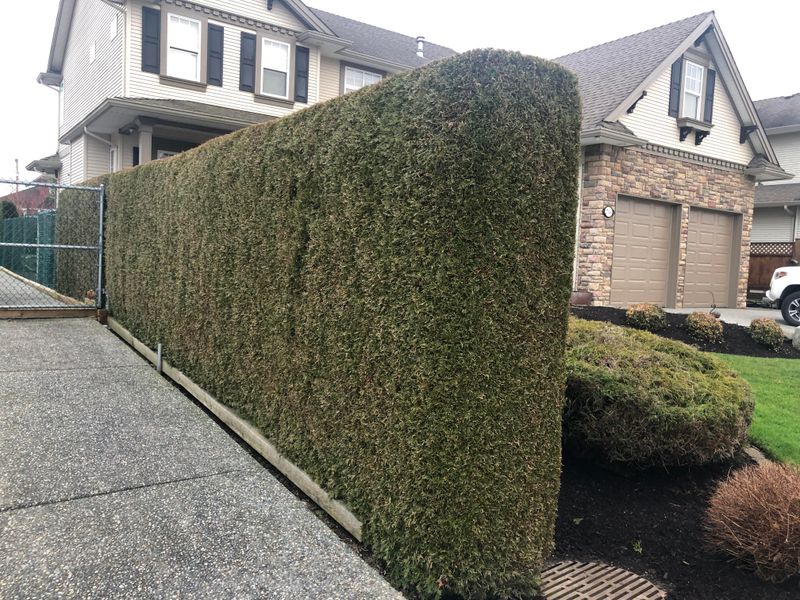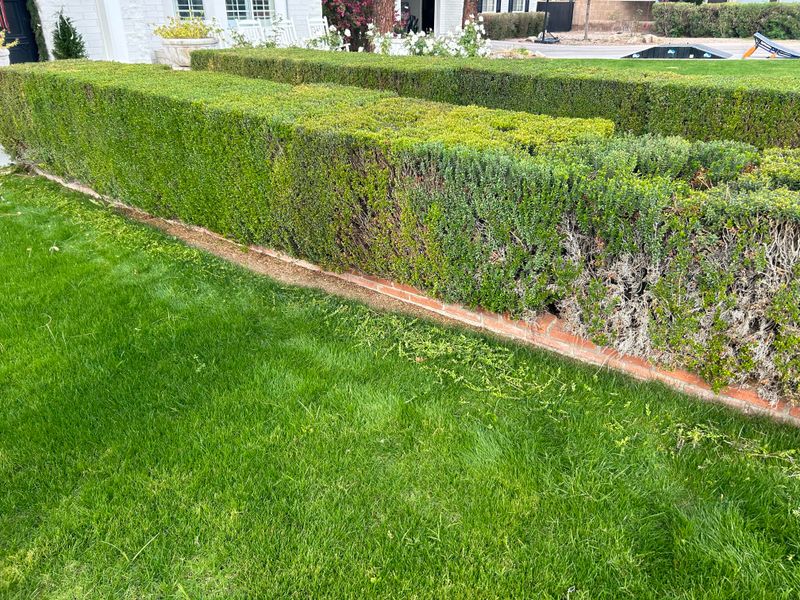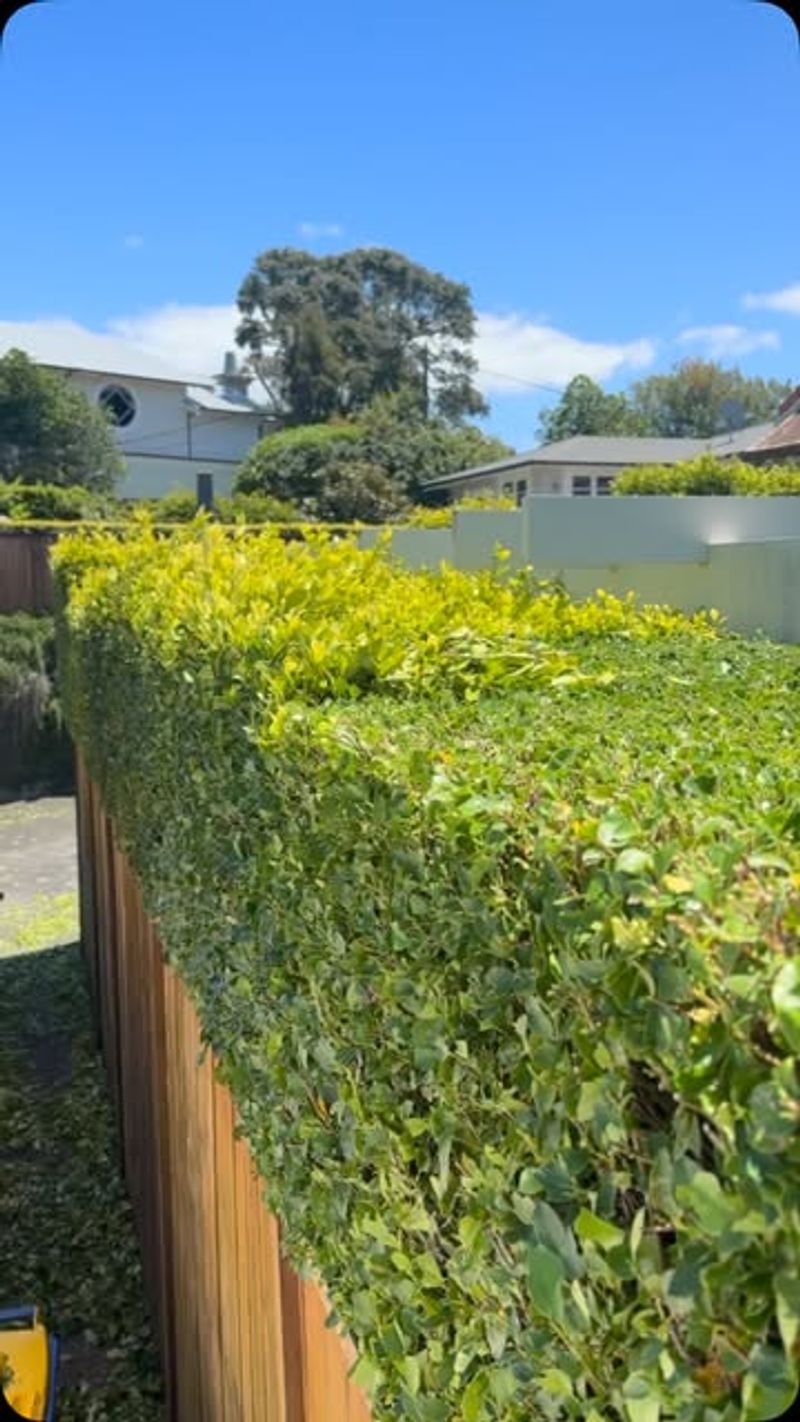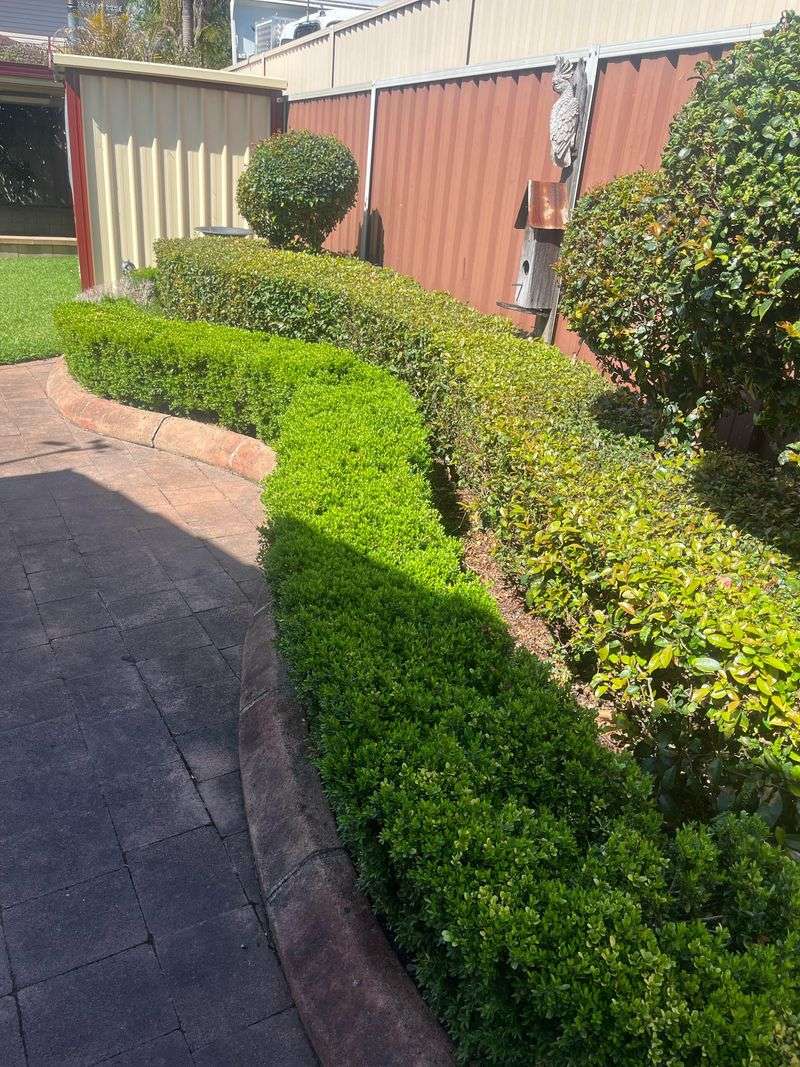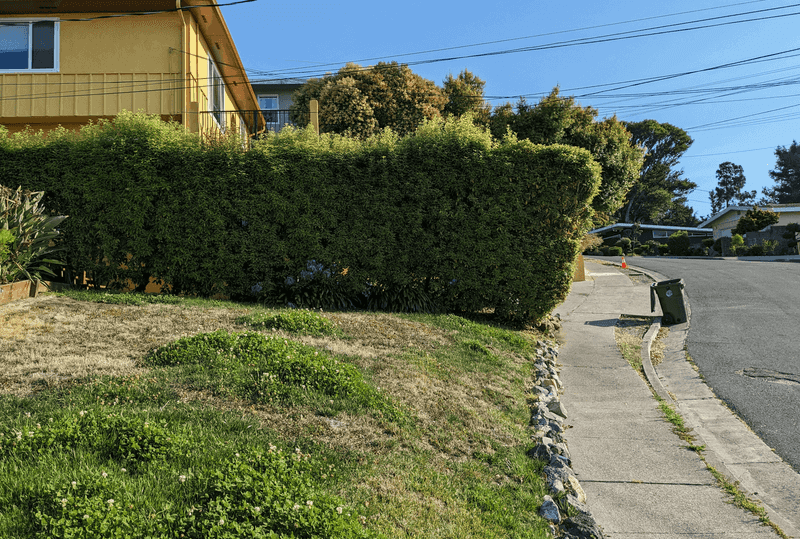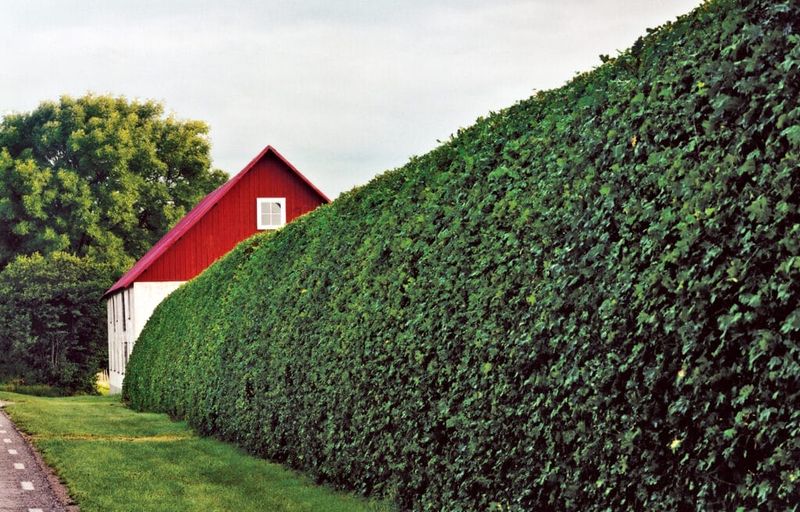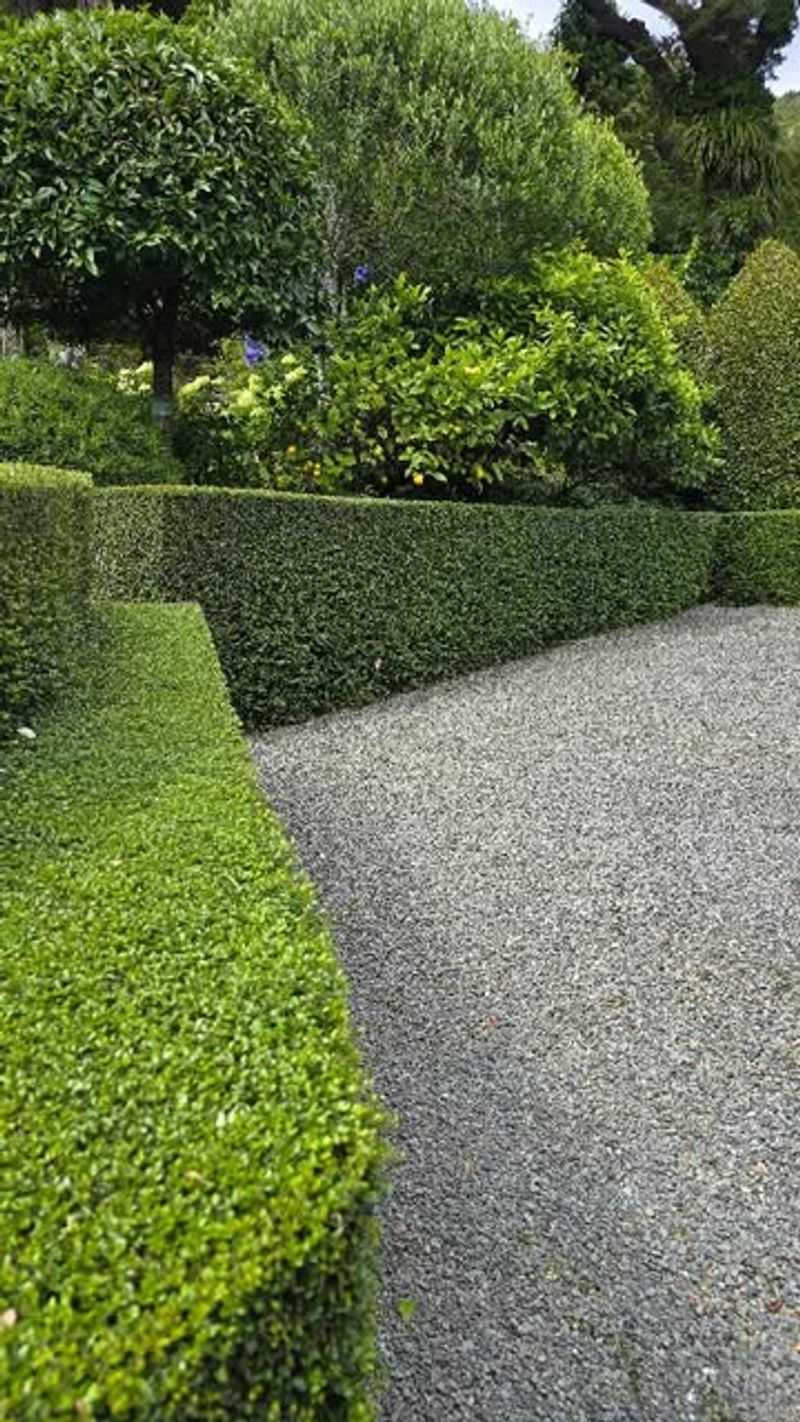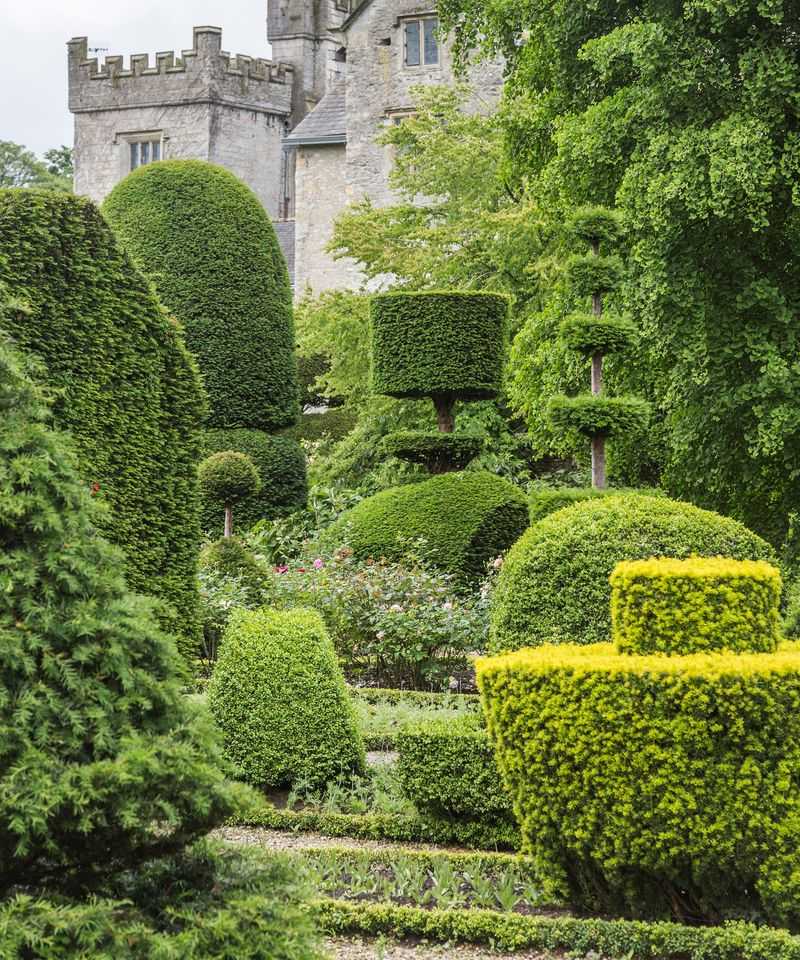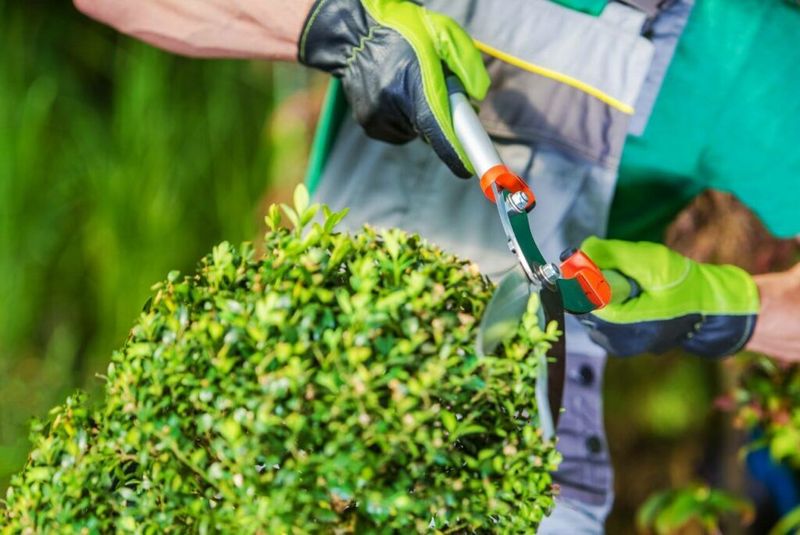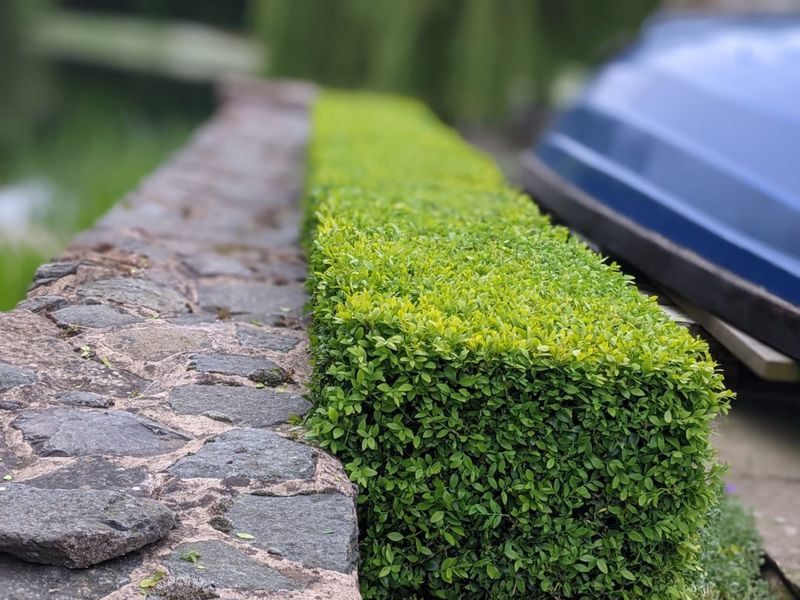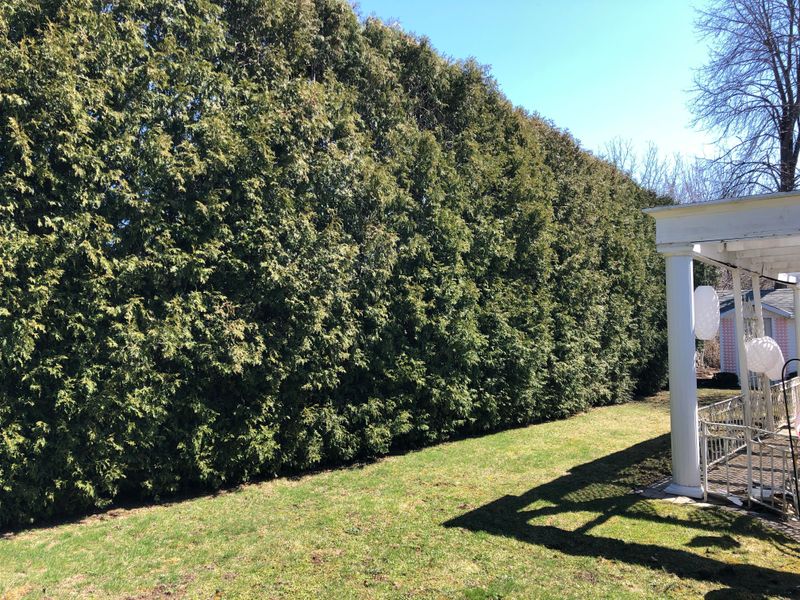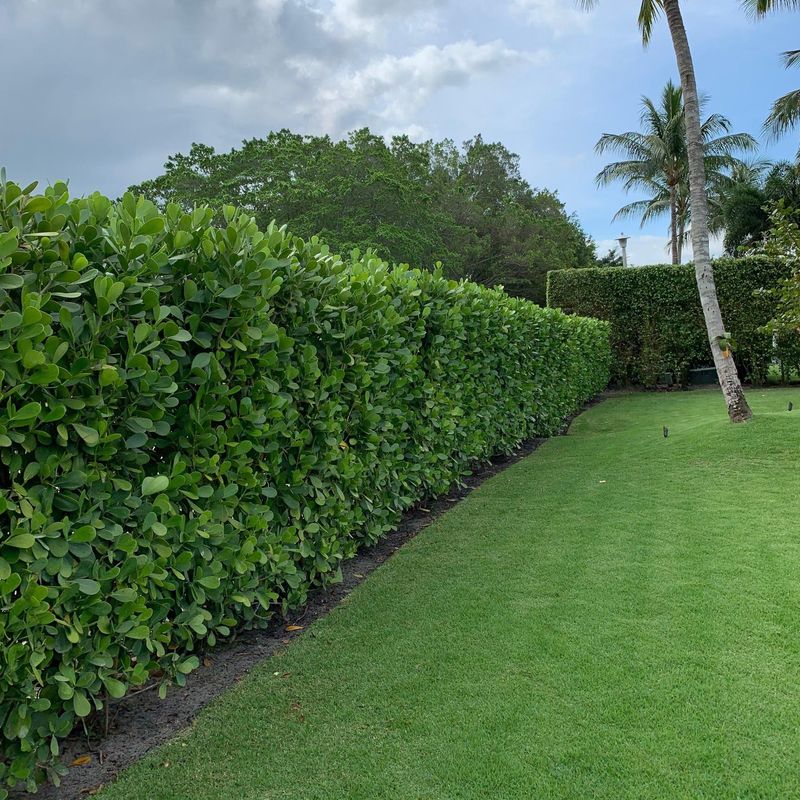Hedges are more than boundaries—they’re the elegant frames that shape your garden’s story. Whether lining a walkway or enclosing a quiet nook, trimmed hedges add structure and polish to your outdoor space. Regular trimming isn’t just about keeping things neat.
It helps hedges stay healthy, encourages fresh growth, and even improves safety by keeping paths clear and sightlines open. It’s a little effort with big impact.
When hedges grow wild, they can quickly turn from charming to chaotic. Overgrowth invites pests, blocks light, and makes your garden feel cluttered. A well-kept hedge keeps your space vibrant, inviting, and full of life.
1. Prevents Uncontrolled Growth Taking Over
Left to their own devices, hedges grow with surprising speed. My neighbor ignored his privet for just one summer, and it expanded nearly two feet in all directions!
Unchecked growth doesn’t just look messy—it steals nutrients from other plants nearby. The roots spread underground, creating an invisible battle for resources.
Regular trimming maintains boundaries and ensures your hedge stays exactly where you want it, not creeping into pathways or smothering neighboring plants.
2. Maintains Proper Air Circulation
Dense, untrimmed hedges become a wall that blocks air movement. I’ve seen perfectly good plants wither on the leeward side of an overgrown hedge, starved of fresh breezes.
Stagnant air pockets create perfect conditions for fungal diseases to develop and spread. These invisible spores multiply quickly in damp, still environments.
Trimming creates small gaps between branches, allowing air to flow freely through the foliage, reducing disease risk and keeping surrounding plants healthier.
3. Keeps Pests Under Control
Overgrown hedges become five-star hotels for unwanted garden pests. Last year, my boxwood became so dense that spider mites set up entire colonies inside, protected from predators and treatments.
Dense growth creates hiding spots for rodents and other unwelcome visitors. They’ll build nests deep inside where predators can’t reach them.
Regular trimming exposes these hiding places, making your hedge less attractive to pests and easier to treat if problems do arise.
4. Promotes Denser, Healthier Growth
Trimming triggers a remarkable response in plants—they branch out more! When you snip the growing tips, the plant redirects energy to side buds, creating fuller growth.
My laurel hedge looked sparse and leggy until I started regular trimming. Within a season, those empty patches filled in beautifully as new growth emerged from previously dormant buds.
Without trimming, hedges grow primarily upward and outward at the tips, leaving the interior sparse and weak—a recipe for an unhealthy plant with a shortened lifespan.
5. Ensures Balanced Sun Exposure
Sunlight can’t penetrate an overgrown hedge, creating a situation where only the outermost leaves receive energy. The inner portions slowly die from lack of light.
I’ve cut into neglected hedges and found hollow centers with dead, brittle branches—all because sunlight couldn’t reach the interior. This weakens the entire structure.
Strategic trimming allows sunlight to filter through to more of the plant, ensuring that inner branches stay alive and contributing to the hedge’s overall health.
6. Prevents Dangerous Visibility Issues
Untrimmed hedges near driveways quickly become safety hazards. My cousin learned this lesson when his overgrown corner hedge caused a near-miss accident by blocking sightlines.
Tall growth can obscure traffic signs, house numbers, and pathway entrances. Emergency services might struggle to find your home when minutes count.
Regular trimming maintains proper heights and widths, especially around corners and entrances, ensuring clear visibility for pedestrians, drivers, and anyone who needs to navigate around your property.
7. Reduces Disease Vulnerability
Crowded branches in untrimmed hedges rub against each other, creating wounds where diseases enter. I’ve watched this happen with my neighbor’s neglected yew hedge—what started as small lesions eventually spread throughout.
Dense growth traps moisture against leaves and stems for extended periods. This wet environment is paradise for fungal and bacterial pathogens.
Trimming improves internal structure, reduces branch crowding, and helps foliage dry quickly after rain or watering, dramatically decreasing disease risk.
8. Maintains Property Boundaries Clearly
Hedges often serve as living property lines, but without maintenance, they can create neighbor disputes. When my father stopped trimming his boundary hedge, his neighbor complained about encroachment onto his land.
Overgrown boundary hedges blur the lines between properties. What starts as a few inches of growth can eventually lead to confusion about where one yard ends and another begins.
Regular trimming respects these boundaries and shows consideration for neighbors, preventing potential disagreements before they start.
9. Prevents Hedge Collapse Under Weight
Untrimmed hedges grow top-heavy, with excessive growth that the base can’t support. After a heavy snow last winter, I watched my untrimmed arborvitae split down the middle from the weight.
Heavy rain or snow collects on untrimmed foliage, adding significant weight. The older, often weaker interior branches aren’t prepared to handle this burden.
Regular trimming maintains a balanced structure where the base remains proportionally strong enough to support the top, preventing costly collapses that can take years to regrow.
10. Controls Growth Direction Intentionally
Untrimmed hedges grow wherever nature dictates, often in unexpected and unwanted directions. My holly hedge started reaching for my kitchen window, scratching the glass during windy days.
Without guidance, branches extend toward light sources, electrical lines, or structures. This random growth pattern can damage siding, windows, and utility connections.
Strategic trimming directs growth where you want it, training the hedge to fill specific spaces while avoiding others—creating harmony between your landscape and structures.
11. Preserves Decorative Shapes and Forms
Shaped hedges quickly lose their distinctive forms without regular maintenance. The cloud-pruned junipers I worked so hard to create reverted to amorphous blobs after just one missed season.
The definition between levels and curves gradually disappears as new growth fills in gaps. What was once a clear geometric pattern or animal shape becomes an undefined mass.
Frequent, careful trimming maintains these artistic elements, preserving the time and effort invested in creating special landscape features that make your garden unique.
12. Prevents Flowering and Fruiting Issues
Many hedging plants produce flowers and berries, which can become problematic when uncontrolled. My untrimmed pyracantha produced so many berries that the mess on my patio was unbearable!
Excessive flowering diverts energy from foliage growth, resulting in thinner leaf coverage. The plant becomes less effective as a screen or windbreak.
Trimming at the right time controls flowering cycles, balancing ornamental features with practical functions while preventing unwanted fruit drop in inconvenient locations.
13. Keeps Walkways and Paths Clear
Untrimmed hedges quickly encroach on walking spaces, creating obstacles and hazards. I learned this the hard way when my mother tripped on my overgrown boxwood that had extended onto the garden path.
Wet foliage hanging over walkways soaks pedestrians after rain. Nobody enjoys getting drenched by an inconsiderate hedge while walking to the front door!
Regular trimming maintains appropriate clearance around paths, ensuring safe, comfortable passage for everyone and preventing potential liability issues from trips and falls.
14. Maintains Privacy Function Effectively
Privacy hedges have one job—to block unwanted views—but untrimmed ones often fail at this task. I’ve seen neighbors’ hedges develop large gaps at the bottom while growing too tall at the top.
Neglected hedges become thin and transparent in spots, especially near the base. These unexpected windows defeat the hedge’s primary purpose of creating a visual barrier.
Regular trimming encourages dense growth throughout the entire height, ensuring consistent coverage without gaps or thin spots that compromise your privacy.
15. Prevents Root System Weakness
Overgrown tops create imbalance with the root system below ground. My arborvitae hedge taught me this lesson when strong winds uprooted several sections that had grown too tall without proportional root development.
The plant naturally tries to balance above and below-ground growth. When the top becomes oversized, roots struggle to provide adequate anchoring and nutrient uptake.
Trimming maintains this critical balance, ensuring the root system remains proportional to the visible growth and capable of supporting the hedge during challenging weather.
16. Reduces Watering Needs Significantly
Overgrown hedges require substantially more water to sustain their excessive foliage. During last summer’s drought, my trimmed cypress hedge survived with minimal watering while my neighbor’s untrimmed one suffered despite constant irrigation.
Each leaf transpires moisture, so more leaves mean greater water loss. This creates unnecessary strain during dry periods when conservation becomes critical.
Keeping hedges appropriately sized through regular trimming reduces water requirements, saving both resources and money while creating more drought-resistant landscape elements.
17. Prevents Expensive Complete Replacements
Severely neglected hedges often can’t be restored to an acceptable condition. After ignoring my privet hedge for three years, I faced a $2,000 replacement cost when rejuvenation pruning failed to revive its barren interior.
The woody interior of long-untrimmed hedges loses its ability to produce new growth. No amount of cutting back will stimulate fresh leaves on these dead zones.
Regular maintenance prevents reaching this point of no return, extending your hedge’s lifespan indefinitely and protecting your landscape investment for decades.

